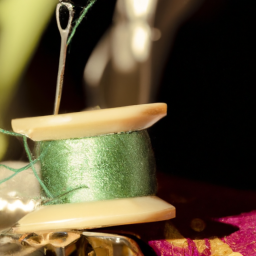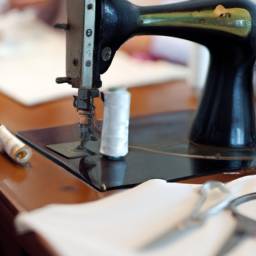
History of Sewing
The art of sewing dates back thousands of years and is considered one of the oldest textile crafts in human history. From the earliest forms of hand stitching to the advanced sewing machines of today, the history of sewing spans cultures, continents, and technological advancements.

In ancient times, people used rudimentary needles made from bones or animal horns to sew together pieces of animal skins for clothing and shelter. This simple form of sewing allowed early humans to survive harsh environments and protect themselves from the elements.
As civilizations developed, so did sewing techniques. The invention of the spinning wheel in the Middle Ages brought significant advancements to textile production, enabling finer thread to be created. With the emergence of looms, intricate patterns and designs could be woven into fabrics, paving the way for more elaborate and decorative clothing.
The Industrial Revolution of the 18th century marked a turning point in the history of sewing. The invention of the sewing machine by Thomas Saint in 1790 laid the foundation for mass production of garments, revolutionizing the entire textile industry. This breakthrough invention led to the establishment of sewing factories and the rise of the ready-to-wear clothing market.
Throughout the 19th and 20th centuries, sewing machines continued to evolve, becoming more accessible and efficient. Innovations such as the lockstitch machine, zigzag stitching, and computerized sewing machines further transformed the way garments were created.
Today, sewing has become not only a practical skill but also a popular hobby and artistic pursuit. From handmade garments to intricate quilts and embroidery, sewing allows individuals to express their creativity and bring their unique visions to life.
With advancements in technology, sewing machines have become more versatile, offering a wide range of features such as automated embroidery, buttonholing, and decorative stitching. Additionally, the availability of online resources and tutorials has made sewing more accessible to beginners, fostering a vibrant community of sewing enthusiasts.
As we look back at the history of sewing, it is evident that this timeless craft has played a vital role in shaping human civilization. From its humble beginnings as a survival skill to its modern-day manifestations as a form of self-expression, sewing continues to weave together the threads of our past, present, and future.




